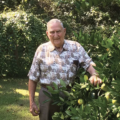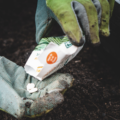Celebrating the Virginia State Flower: Dogwood (Cornus florida) – Along with Little-Known Fun Facts
"Dogwood trees have a hard white wood that used to be harvested to make skewers for cooking.
So again, this is another neat tieback to the dag or dagger reference.
This is also how the Dogwood got one of its ancient common names:
The Skewerwood."
February 24, 1957
On this day, The Times-Dispatch out of Richmond, Virginia, ran a piece by Pat Perkinson that called on all gardeners to plant the Dogwood (Cornus florida) during the Virginia State Flower Anniversary.
“Aside from their significance as the state flower of Virginia, Dogwood trees also are symbolically remindful of the colonists who first found them growing so prolifically here in the 17th century. Not only did they enjoy the bushy trees, but they also put the bark to medicinal use... combatting the effects of malaria.
To get an idea of the conditions preferred by Dogwood, we have only to observe the situations in which they grow in nature. As you drive along the highways, you will notice that Dogwood flourishes in the shade of the taller trees of the forest. Perhaps you would like to situate young trees a short distance from the house where they will be partly shaded and where they may be enjoyed from the windows.”
And here are some fun Dogwood facts:
- In addition to being Virginia’s State Flower, the dogwood is the state tree of Virginia, Missouri, and North Carolina.
- Native Americans used the Dogwood as a phenological guide and planted their corn crop when it bloomed.
- The Dogwood tree's roots and bark have been used to treat malaria.
- In Floriography ("FLOOR-EE-ah-grah-FEE") or the language of flowers, Dogwood flowers symbolize rebirth.
- Dogwood shrubs and trees are in the Cornus genus, and Cornus comes from the Latin Cornu, for horn, which references the dogwood being a hardwood tree.
- Many old botanical reference guides say that the tree used to be called the dagwood - as in dagger - again, another reverence to hardwood.
- Dogwood trees have a hard white wood that used to be harvested to make skewers for cooking. So again, this is another neat tieback to the dag or dagger reference. This is also how the Dogwood got one of its ancient common names: The Skewerwood.
- Another ancient reference is the dogwood fruit, which used to be called dogberries. As one might suspect, a dogberry was not all that good, and the name implied that the berry wasn’t even good for a dog. Today, we know that Dogwood berries can irritate a dog’s tummy. In addition, handling Dogwood or touching the bark can be a skin irritant - so wear gloves when you prune. This brings me to my last point...
- As with so many flowering trees and shrubs, prune time follows bloom time when it comes to the dogwood. Every June, after the tree has finished blooming, you can prune the tree back to encourage it to set more flower buds. Never prune your Dogwood after winter ends or before it has bloomed because then you remove the bracts (flowers) before they can bloom in the spring. So with Dogwoods, remember: prune time follows bloom time!
This post was featured onThe Daily Gardener podcast:
helping gardeners find their roots,
one story at a time






